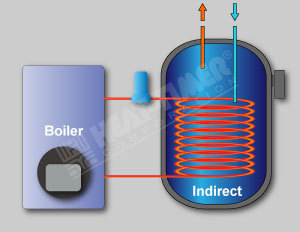I'm so impressed with the outpouring of informed advice for everyone who asks questions on this site. Thanks for being here!
My problem is that my boiler broke this past winter in my 1969 split level house and the plumber put in a temporary fix, got me through the winter. So now it's time to decide. Lots of choices! Facts: baseboard heat, about 70 ft of baseboard on each of the 2 floors, no basement (slab house, New Jersey, not too bad winters, but damp location near water).
2 bathrooms, center of house above abs below each other, dishwasher. House 1850SF. Garage.
I was hoping for the Navien NCB 210 combination boiler/hot water but read so many things about what could go wrong that I'm nervous. The guy I have who I would go with to install that has 9 years experience with installing those and I asked about issues of water going cold, unit not working efficiently etc and he said to be honest, at first there were problems which they had to go back and fix but with experience (and using the specs in the manual) they now know how to do it well.
Another 2 choices (more expensive but keeping 2 separate wall hung units and still qualifying for the best Eco rebates):
Weill-McLain Eco80 + Navien NPE 210
Carrier BW9AAN000075 + same
I'm totally new. This is so confusing.
I also have estimates for conventional boilers too ( Weill M CGA4 88,000 BTU or Carrier BWB...96 78,000 BTU) with that Navien wall hung hot water unit.
Any advice you could offer would be SO appreciated. If you need a photo of my house I can post it.
Thank you!!
My problem is that my boiler broke this past winter in my 1969 split level house and the plumber put in a temporary fix, got me through the winter. So now it's time to decide. Lots of choices! Facts: baseboard heat, about 70 ft of baseboard on each of the 2 floors, no basement (slab house, New Jersey, not too bad winters, but damp location near water).
2 bathrooms, center of house above abs below each other, dishwasher. House 1850SF. Garage.
I was hoping for the Navien NCB 210 combination boiler/hot water but read so many things about what could go wrong that I'm nervous. The guy I have who I would go with to install that has 9 years experience with installing those and I asked about issues of water going cold, unit not working efficiently etc and he said to be honest, at first there were problems which they had to go back and fix but with experience (and using the specs in the manual) they now know how to do it well.
Another 2 choices (more expensive but keeping 2 separate wall hung units and still qualifying for the best Eco rebates):
Weill-McLain Eco80 + Navien NPE 210
Carrier BW9AAN000075 + same
I'm totally new. This is so confusing.
I also have estimates for conventional boilers too ( Weill M CGA4 88,000 BTU or Carrier BWB...96 78,000 BTU) with that Navien wall hung hot water unit.
Any advice you could offer would be SO appreciated. If you need a photo of my house I can post it.
Thank you!!



